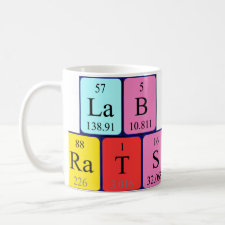
Authors: Abedi H, Ebrahimzadeh H
Article Title: Imprinted polymer-based extraction for speciation analysis of inorganic tin in food and water samples.
Publication date: 2013
Journal: Reactive and Functional Polymers
Volume: 73
Issue: (4)
Page numbers: 634-640.
DOI: 10.1016/j.reactfunctpolym.2013.01.011
Alternative URL: http://www.sciencedirect.com/science/article/pii/S1381514813000230
Abstract: In this study, an ion imprinted polymer (IIP), tin (IV)-4-(2-pyridylazo) resorcinol (PAR) complex (Sn(IV)-PAR-IIP) has been synthesized for speciation and selective solid-phase extraction (SPE) of tin species from food and water samples. For this purpose, copolymerization of Sn(IV)-4-(2-pyridylazo) resorcinol (PAR) complex was performed using methacrylic acid (MAA), ethylene glycol dimethacrylate (EGDMA), and 2,2'-Azobisisobutyronitrile (AIBN) as functional monomer, cross-linking agent, and initiator, respectively. The polymer particles were characterized by FT-IR, and thermogravimetric (TG) analyses. The effects of different variables such as solution pH, mass of the polymer, extraction and elution time, and type and volume of the eluent for elution of tin were evaluated by Box-Behnken design and response surface methodology. The significance of independent variables and their interactions were tested by the analysis of variance (ANOVA) with 95% confidence limits. The optimal conditions at extraction step were 8, 70 mg, and 25 min for solution pH, amount of polymer, and extraction time, respectively. Also, the optimal values for the elution step were 6.5 mL of HCl (4 M) as the eluent volume and type and elution time of 120 min. The detection limit of the proposed method was found to be 1.3 μg L-1 and a linear dynamic range (LDR) in the range of 5-200 μg L-1 was obtained. The influence of various cationic interferences on recovery percentage of Sn(IV) was studied. The method was applied to recovery and determination of tin species in different real samples
Template and target information: tin (IV)-4-(2-pyridylazo) resorcinol (PAR) complex, Sn(IV)-PAR-IIP
Author keywords: Ion Imprinted Polymer (IIP), Tin, Sn(IV), Box-Behnken design, Response surface methodology



Join the Society for Molecular Imprinting

New items RSS feed
Sign-up for e-mail updates:
Choose between receiving an occasional newsletter or more frequent e-mail alerts.
Click here to go to the sign-up page.
Is your name elemental or peptidic? Enter your name and find out by clicking either of the buttons below!
Other products you may like:
 MIPdatabase
MIPdatabase









